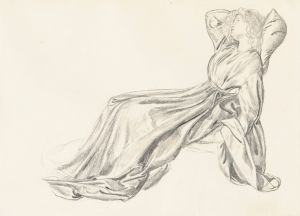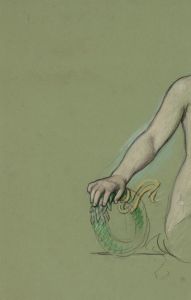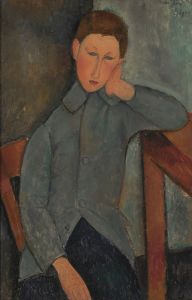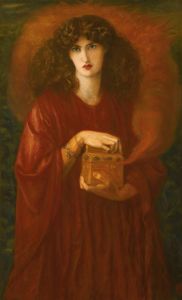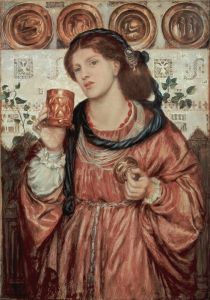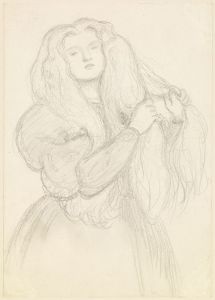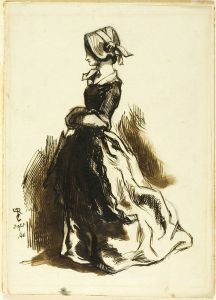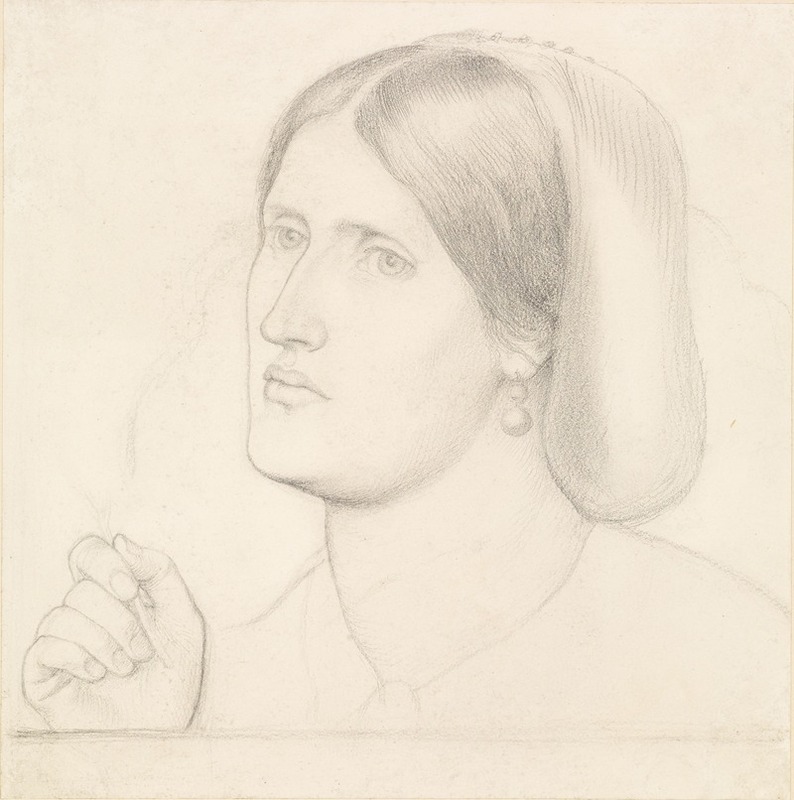
Regina Cordium – Study of Mrs Aldam Heaton
A hand-painted replica of Dante Gabriel Rossetti’s masterpiece Regina Cordium – Study of Mrs Aldam Heaton, meticulously crafted by professional artists to capture the true essence of the original. Each piece is created with museum-quality canvas and rare mineral pigments, carefully painted by experienced artists with delicate brushstrokes and rich, layered colors to perfectly recreate the texture of the original artwork. Unlike machine-printed reproductions, this hand-painted version brings the painting to life, infused with the artist’s emotions and skill in every stroke. Whether for personal collection or home decoration, it instantly elevates the artistic atmosphere of any space.
Regina Cordium – Study of Mrs. Aldam Heaton is a chalk drawing created by the Pre-Raphaelite artist Dante Gabriel Rossetti in 1860. The artwork is a preparatory study for Rossetti's oil painting Regina Cordium (Latin for "Queen of Hearts"), which was completed in the same year. The study depicts Mrs. Aldam Heaton, a friend and patron of Rossetti, who served as the model for this piece.
Dante Gabriel Rossetti (1828–1882) was a founding member of the Pre-Raphaelite Brotherhood, a group of artists and writers established in 1848. The Brotherhood sought to reject the academic conventions of their time and instead embraced a return to the detailed, vibrant, and symbolic style of early Renaissance art. Rossetti was known for his depictions of idealized female beauty, often using his models to explore themes of love, spirituality, and mythology.
Mrs. Aldam Heaton, the subject of this study, was a prominent figure in Victorian society and an advocate for the arts. She was married to John Aldam Heaton, a designer and art collector who shared her interest in the Pre-Raphaelite movement. The Heatons were known for their support of contemporary artists, and their patronage helped sustain Rossetti and other members of the Brotherhood during their careers.
The chalk study captures Mrs. Aldam Heaton in a contemplative pose, with a focus on her facial features and expression. Rossetti's use of chalk allowed him to create soft, delicate lines and shading, emphasizing the sitter's serene beauty. The drawing reflects Rossetti's skill in portraiture and his ability to convey emotion and character through his art.
The final oil painting, Regina Cordium, was completed later in 1860 and is considered one of Rossetti's notable works. While the study and the painting share the same title, the oil version features Rossetti's wife, Elizabeth Siddal, as the model rather than Mrs. Aldam Heaton. This shift in models was not uncommon in Rossetti's creative process, as he often used multiple studies and inspirations to inform his final compositions.
The chalk study of Mrs. Aldam Heaton is an example of Rossetti's preparatory work and provides insight into his artistic process. It also highlights the collaborative relationships between the artist and his patrons, who played a significant role in the development and promotion of Pre-Raphaelite art during the 19th century. The current location of the study is not widely documented, and it is unclear whether it resides in a public collection or remains in private hands.






